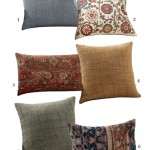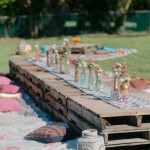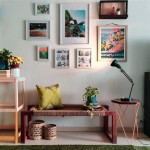What Is Traditional Contemporary Decor?
The term "Traditional Contemporary Decor" describes a design aesthetic that skillfully blends the timeless elegance of traditional design with the clean lines and minimalist sensibilities of contemporary style. It is not merely a fusion of two distinct styles but rather a thoughtful and refined approach that creates harmonious and inviting spaces. This design leverages the best aspects of both traditional and contemporary elements, resulting in interiors that are both comfortable and stylish, familiar yet fresh.
Understanding Traditional Contemporary Decor requires examining the core principles of both traditional and contemporary design. Traditional design typically incorporates ornate details, rich colors, and historical references, drawing inspiration from past eras like Victorian, Georgian, and French Provincial. Common elements include intricate moldings, heavy draperies, antique furniture, and patterned textiles. Contemporary design, on the other hand, emphasizes simplicity, functionality, and clean lines. It often features neutral color palettes, open spaces, minimal ornamentation, and modern materials like steel, glass, and concrete.
Traditional Contemporary Decor seeks to bridge the gap between these seemingly disparate styles. It achieves this by selectively incorporating traditional elements into a contemporary framework, or vice versa. The key is balance and restraint, ensuring that neither style overpowers the other. The ultimate goal is to create a space that feels both current and classic, sophisticated and comfortable.
Key Characteristics of Traditional Contemporary Decor
Several defining characteristics distinguish Traditional Contemporary Decor from other design styles. These elements contribute to the unique and balanced aesthetic that defines this approach.
Blending of Furnishings: One of the defining aspects of Traditional Contemporary Decor is the careful mixing of furniture styles. A room might feature a classic, upholstered sofa with rolled arms and button tufting, paired with a sleek, modern coffee table made of glass and metal. Conversely, a contemporary sectional could be complemented by antique side tables or a traditional armoire. The contrast in styles creates visual interest and prevents the space from feeling either too stuffy or too sterile. The selection process focuses on items that complement each other in texture, color, and scale, even when originating from different aesthetic periods.
Color Palette Harmony: The color palette employed in Traditional Contemporary Decor is typically muted and sophisticated. While traditional design often embraces rich, saturated colors, and contemporary design favors stark neutrals, this hybrid style often utilizes a base of neutral tones such as creams, grays, and beiges. These neutral colors provide a calming backdrop that allows both traditional and contemporary elements to shine. Pops of color are often introduced through accessories, artwork, or accent furniture. These bursts of color can be drawn from either traditional or contemporary palettes, but are often used sparingly to maintain balance and prevent visual clutter.
Balanced Use of Texture: Texture plays a crucial role in adding depth and visual interest to Traditional Contemporary spaces. Traditional design often features luxurious textures like velvet, silk, and brocade, while contemporary design favors smooth, streamlined surfaces. Traditional Contemporary Decor incorporates a mix of both to create a tactile and inviting environment. A room might feature a plush velvet armchair alongside a sleek, lacquered console table, or a woven rug paired with smooth, polished floors. The interplay of textures adds dimension and prevents the space from feeling flat or monotonous.
Strategic Ornamentation: Ornamentation in Traditional Contemporary Decor is carefully considered and strategically placed. While traditional design often features abundant decorative details, contemporary design embraces minimalism. This hybrid style strikes a balance by incorporating select traditional embellishments into a clean, contemporary framework. A room might feature ornate crown molding paired with minimalist artwork, or a crystal chandelier suspended above a simple, modern dining table. The key is to avoid excessive ornamentation that could overwhelm the space, while still adding touches of elegance and sophistication.
Key Elements of Traditional Contemporary Decor
Going beyond the characteristics, specific elements are often found consistently in Traditional Contemporary design. These elements exemplify the balance and fusion that characterize the style.
Modern Architectural Details with Traditional Accents: The architectural foundation of a Traditional Contemporary space often leans towards modern principles – open floor plans, large windows, and clean lines. However, these modern elements are often softened with traditional accents. For example, a contemporary loft apartment might retain original exposed brick walls or incorporate custom millwork inspired by classic designs. A modern kitchen might feature sleek cabinetry paired with a marble backsplash and traditional-style hardware. The integration of both modern and traditional architectural elements creates a sense of history and character within a contemporary context.
Updated Traditional Furniture: Traditional furniture pieces are often reimagined with contemporary updates in Traditional Contemporary Decor. This might involve reupholstering a classic armchair in a modern fabric, painting an antique dresser in a contemporary color, or pairing a traditional dining table with modern chairs. These updates breathe new life into traditional pieces, allowing them to seamlessly integrate into a contemporary setting. The process often involves simplifying the overall silhouette of the furniture while retaining key design elements that evoke a sense of tradition.
Minimalist Window Treatments with Classic Fabrics: Window treatments in Traditional Contemporary Decor often combine the functionality of minimalist designs with the elegance of classic fabrics. Roman shades, roller blinds, or simple drapery panels in neutral colors are common choices. These minimalist designs allow natural light to flood the space while providing privacy. However, the fabrics used for these window treatments might be drawn from traditional palettes, such as linen, silk, or subtle patterns inspired by historical textiles. This combination of clean lines and classic fabrics creates a sophisticated and understated look.
Lighting that Integrates Old and New: Lighting fixtures play a critical role in defining the atmosphere of a space, and Traditional Contemporary Decor utilizes a mix of both traditional and contemporary styles. A room might feature a modern recessed lighting system paired with a statement chandelier inspired by classic designs. Table lamps with ornate bases and contemporary shades are also common. The key is to choose lighting fixtures that complement both the traditional and contemporary elements of the space. The placement and intensity of the lighting are also carefully considered to create a warm and inviting ambiance.
Achieving the Traditional Contemporary Look
Implementing Traditional Contemporary Decor effectively requires careful planning and attention to detail. It is crucial to understand the fundamental principles of both traditional and contemporary design before attempting to blend them. It also involves considering the existing architectural features of the space and how they can be incorporated into the design.
Start with a Neutral Foundation: Begin by establishing a neutral color palette for the walls, floors, and large furniture pieces. This provides a versatile backdrop that allows you to layer in both traditional and contemporary elements. Neutral colors such as creams, grays, whites, and beiges are ideal choices. This neutral foundation allows for flexibility in accessorizing and prevents the space from feeling overwhelming or cluttered.
Introduce a Mix of Furniture Styles: Select furniture pieces that represent both traditional and contemporary styles. Don't be afraid to mix and match different eras and design aesthetics. However, ensure that the furniture pieces complement each other in terms of scale, color, and texture. Consider reupholstering traditional pieces in modern fabrics or updating antique furniture with contemporary hardware. The goal is to create a curated collection of furniture that tells a story and reflects your personal style.
Incorporate Traditional Accents Strategically: Add traditional accents sparingly to enhance the overall aesthetic of the space. This might include ornate mirrors, antique artwork, crystal chandeliers, or decorative pillows in classic fabrics. The key is to avoid excessive ornamentation that could detract from the clean lines and minimalist sensibility of the contemporary elements. Instead, focus on incorporating a few key traditional accents that add a touch of elegance and sophistication.
Balance Texture and Pattern: Pay close attention to the textures and patterns used in the space. Mix luxurious textures like velvet and silk with smooth, streamlined surfaces like glass and metal. Incorporate subtle patterns inspired by traditional textiles, but avoid overwhelming the space with too many bold or intricate patterns. The goal is to create a tactile and visually interesting environment that is both comfortable and stylish.
Edit Ruthlessly: One of the most important aspects of achieving the Traditional Contemporary look is editing ruthlessly. Remove any unnecessary items that contribute to clutter or detract from the overall aesthetic. Focus on curating a collection of high-quality pieces that you truly love and that reflect your personal style. A minimalist approach is key to creating a space that feels balanced, harmonious, and inviting.
By understanding the core principles of both traditional and contemporary design and carefully selecting and integrating key elements, individuals can successfully create a space that embodies the timeless elegance and modern sensibilities of Traditional Contemporary Decor. The result is an interior that is both comfortable and stylish, familiar yet fresh, and reflective of a sophisticated and discerning aesthetic.

Traditional Vs Contemporary Design Why Not Both

Contemporary Traditional Design Southern Mansion Dk Decor

Contemporary Design Style And The Essentials To Master It Décor Aid

Past Present Perfect Mixing Traditional Contemporary Décor News Herald

Contemporary Interior Design Style Guide Hey There Home

When Traditional Interiors Meet Bold Contemporary Art And Design Galerie

Contemporary Design Style And The Essentials To Master It Décor Aid

The Trick To Mixing Modern And Traditional Furniture Laurel Home

Modern Design Vs Contemporary Difference Between And Styles

Classic Meets Contemporary Guide To Transitional Style C
Related Posts







